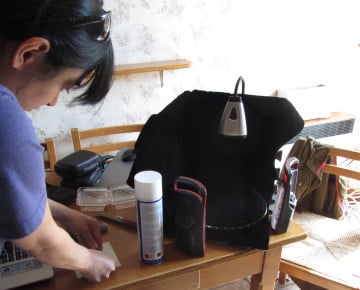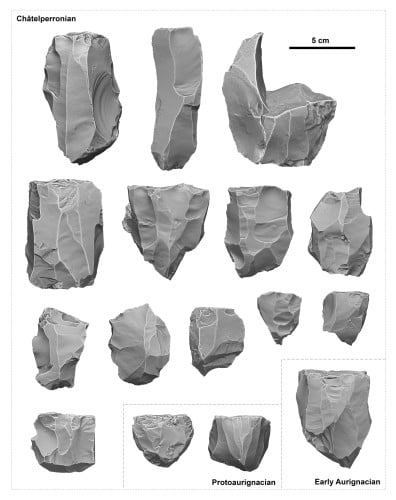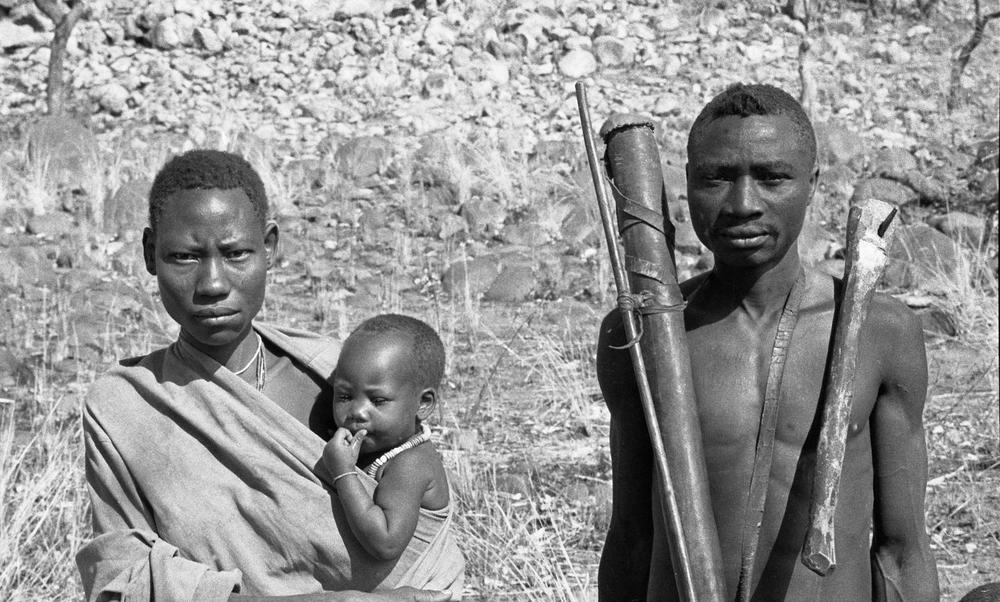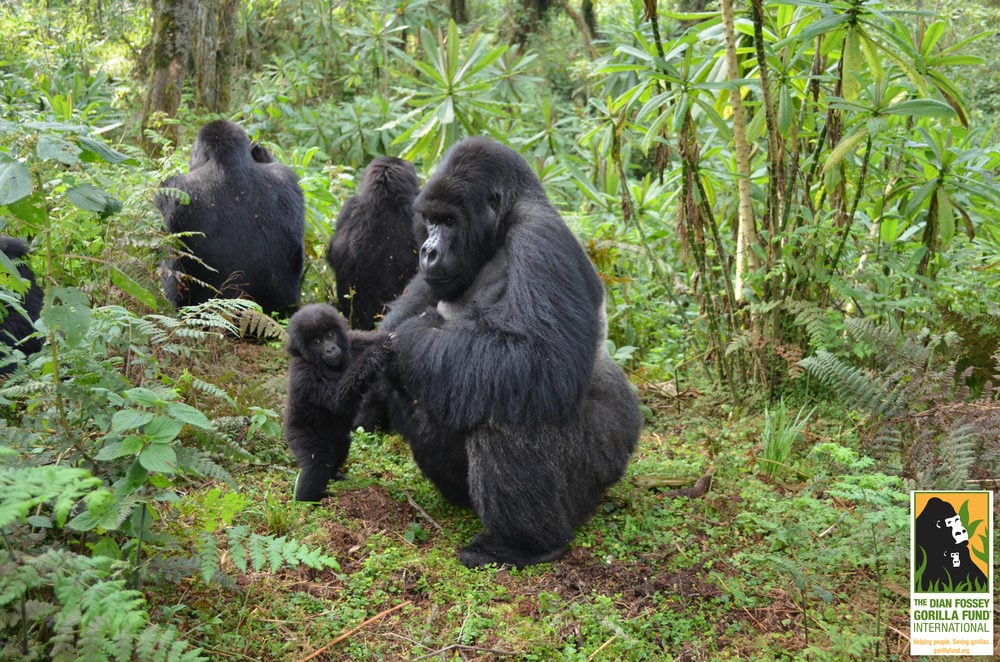Journal Article
Last year we introduced you to Samantha Porter who received a Leakey Foundation Research Grant in the fall of 2014 for her project entitled “Investigating cultural transmission across the Middle to Upper Paleolithic transition in Western Europe.” Recently Porter and her team published an article describing their photogrammetry technique for creating 3D artifact models. She was kind enough to share some insights (and 3D models) with us!

Over the past few years, the ability to create 3D models of fossils, artifacts, and even entire sites has begun to revolutionize the fields of paleoanthropology and archaeology. 3D representations of objects have several uses; for one thing, it is common for researchers to spend most of their year far away from the material they are studying. 3D models can be used as a portable reference across sites, and even across continents. Furthermore, data derived from 3D models can be evaluated using sophisticated statistical techniques, such as geometric morphometrics, which make it possible to analyze similarities and differences in shape quantitatively. 3D models can also be used as a way of enhancing traditional two-dimensional static illustrations found in most publications. Finally, interactive 3D models are an excellent educational tool, and are great ways of making specimens accessible to a broader audience.
Initially, the most popular way for researchers to create 3D models was through the use of 3D scanners. Although they are highly effective, these scanners can be expensive, hard to transport, and prone to breaking down. For a graduate student conducting research in a variety of relatively remote locations, traveling alone, and with limited funds, these factors meant bringing a 3D scanner to the field was not feasible. This pushed me to look into other ways of creating 3D scans.
Photogrammetry (also known as structure from motion) works by finding common reference points across a series of digital photographs. These reference points are used to calculate the position of the camera in each shot, as well as shape of whatever is being photographed. Thanks to recent advances in processing software and digital cameras, 3D models produced using this technique can be of the same quality or even better than models produced by the most common types of 3D scanner. In order to properly apply this technique and consistently create high-quality 3D models, I developed a photogrammetry rig and established an accompanying photography and post-processing protocol. The rig uses inexpensive, easily replaceable parts, is collapsible, and can easily fit within a carry-on suitcase. All of its electronic elements are battery-powered, meaning it is possible to create 3D models just about anywhere there is a flat surface.

My dissertation uses the analysis of stone tool technology to examine hypotheses regarding the interactions of Neanderthals and anatomically modern humans across the period just before Neanderthal extinction, also known as the Middle to Upper Paleolithic Transition. One of the key sites to addressing this question is Les Cottés, which is located in central France. It’s one of the rare sites that contains distinct archaeological levels associated with both species.
During the 2014 field season at Les Cottés I used my photogrammetry rig along with the software Agisoft PhotoScan to create models of lithic artifacts from the Châtelperronian, Protoaurignacian, and Early Aurignacian deposits of Les Cottés. An article I have published along with Morgan Roussel and Marie Soressi in the journal Advances in Archaeological Practice includes these models, as well as full instructions on assembling a photogrammetry rig, taking photographs, and processing these photographs into finished models.
We hope that this article can act as a guide to those who wish to use photogrammetry themselves, whether it is for research or non-scholarly purposes. Moreover, we hope this article serves as a demonstration of the importance of ingenuity and creativity in paleoanthropology and archaeology, especially in regards to developing accessible methods and technologies, and sharing this knowledge openly with the greater community.
Links to the article and supplementary material can be found below the video and 3D models.
Video demonstrating the photogrammetry rig:
3D model of a Châtelperronian core from Les Cottés created using the protocol detailed in Porter et al. 2016:
[iframe id=”https://sketchfab.com/models/82ea0d3ddf3346a59e7f77a674a1fa72/embed”]
3D model of the excavation at Les Cottés at the end of the 2015 season (also produced using photogrammetry):
[iframe id=”https://sketchfab.com/models/e3b304ac2f4946fa99cf68a3d54dbcfe/embed”]
Article Citation
Porter, S. T., Roussel, M., & Soressi, M. (2016). A Simple Photogrammetry Rig for the Reliable Creation of 3D Artifact Models in the Field Lithic Examples from the Early Upper Paleolithic Sequence of Les Cottés (France).Advances in Archaeological Practice, 4(1), 71-86. http://dx.doi.org/10.7183/2326-3768.4.1.71
Click here to download the article from Samantha Porter’s web site.
Click here to view supplementary information (no journal subscription required to access).

